Abstract
Background: Transnet moves around 80% of South Africa’s rail-friendly freight tonne-kilometres, which drops to less than 40% if the rail-only coal and iron ore export lines are excluded.
Objectives: Calculating the costs, negative externalities, and job losses caused by Transnet’s recent and historical operational issues and using the results to inform future reform possibilities.
Method: Aspects contributing to Transnet’s failures are indicated through an assessment of rail freight’s decreasing market share and infrastructure investment, port ownership and inefficiency concerns, Transnet’s deteriorating financial performance, loss of critical skills, and instances of state capture. Resultant costs and their impact on employment are calculated across various freight flow segments, whereafter reform models are suggested through international benchmarking and extracting lessons from relevant global reforms.
Results: The cost of Transnet’s failures are estimated as 7.43% of gross domestic product. A healthy relationship between the government and the private sector is a frequent occurrence in successful reforms seen globally. Locally, recent government reforms acknowledge a meaningful role for the private sector, which is in turn offering pragmatic and achievable solutions.
Conclusion: Improved private sector participation can contribute to Transnet’s recovery. South Africa depends on this collaboration and the development of port and rail master plans to guide the infrastructure development required to meet its overall transportation needs.
Contribution: Actionable implications for policy implementation, the economic regulation and horizontal separation of the freight railway, shifting freight from road to rail, the corporatisation of the port authority, and increasing port efficiency and capacity.
Keywords: macrologistics; value chains; logistics cost; state-owned enterprises; rail reform; public–private partnership; emerging economy; South Africa.
Introduction
Situated on the southern tip of a vast continent, South Africa relies heavily on efficient railways and ports to be a globally competitive exporter. The transport state-owned enterprise (SOE), Transnet, has, however, fumbled in its task to deliver this service. While Transnet remains responsible for transporting close to 80% of all rail-friendly freight tonne-kilometres, it moves less than 40% if the rail-only coal and iron ore export lines are removed. Shockingly, in 2022, Transnet’s export coal line underperformed by nearly 30% in tonnage terms compared to the volumes achieved previously (such as 2019), representing a further significant loss to the economy (Freight Demand Model [FDM™] 2022).
In addition to owning and operating the rail infrastructure, Transnet owns the port infrastructure at the country’s nine major seaports and operates the bulk, breakbulk, car and container terminals. Transnet is also responsible for transporting liquid fuels between Durban and Gauteng, using its multiproduct pipeline. Transnet has deep structural and financial challenges (Steyn 2023). The upshot is a large but poorly utilised network, deteriorating assets, spiralling costs and an unsustainable shift of freight from rail onto highways and roads.
Research methods and design
In this research, Transnet’s problems are dissected, and the costs these have exacted on the people of the country via direct and opportunity costs, negative externalities and job losses are calculated. These calculations are discussed further in the results section. The methodology builds on an established approach used in prior freight transport research conducted by the authors, whereof the most influential was focused on the development of a road-to-rail strategy (Havenga et al. 2021). Quantitative and qualitative inputs from prior research are, therefore, incorporated in the shape of freight demand data and stakeholder perceptions, which informed the paper’s additional calculations and updated outputs required to reflect Transnet’s effect on the South African economy in recent years.
The freight demand data are provided by GAIN Group’s South African Freight Demand Model, which estimates sectorally disaggregated supply (production and imports) and demand (intermediate domestic demand, final domestic demand and exports) of commodities in predefined geographical areas, the aggregate of which reflects total supply and demand for South Africa. A more technical description of the model is published in studies by Havenga (2007:160–179), Havenga (2013), Havenga and Simpson (2018b) and Havenga et al. (2020:138–172).
The measurement and understanding of rail market share is a challenge from a modal supply perspective. The rail market share targets produced by the Department of Transport (DoT) in its road freight strategy policy (DoT 2017) lack the necessary detail and context to highlight the challenges and opportunities related to achieving the targets adequately. Market share calculation can be a complex task because market share can be defined from various angles. As numerous market share figures are quoted in the press or in interactions between stakeholders, it is vital that market share calculations are clear on the metric being discussed, its purpose and what is contained in the data (which is often not the case).
The outputs of the FDM™ enable a detailed understanding of rail market share, which is used to determine rail-friendly freight through a freight flow segmentation approach (Havenga 2012). This approach considers the total freight transport market to ensure that rail objectives are not only understood in terms of the total market but also refined in terms of specific market segments. For clarity, tonne-kilometre (tonne-km) is used as the key market share metric, with one tonne-km representing the transport of one tonne over one kilometre. As tonne-km takes both tonnes shipped and the distance shipped into account, it is a preferred metric over tonnes. Furthermore, freight transport refers to the total movement of goods using inland transport on a given network, while density refers to tonne-km divided by route-km.
To classify freight for the purposes of this research, the freight-flow segments mentioned earlier are defined in the ‘Economic cost of failures’ section. These segments are derived from the South African economy’s basic structure and its resultant logistics requirements. For each of these segments, rail economic principles are used to determine target market share, which in turn enables the achieved and missing market share to be calculated. As published in the study by Havenga et al. (2021), the following factors determine these principles:
- Product and commodity uniformity: The standardisation of freight to facilitate handling and transport, such as bulk iron ore or containerised commodities. This requires large uniform fleets with focused loading equipment such as evacuators and tipplers for ore; and cranes and ridge stackers for containers.
- Terminal density: The more freight is loaded and offloaded in the same district, the more possible it becomes to create super terminals, logistics hubs and freight villages. These terminals create ideal opportunities for freight consolidation, intermodal and synchromodal operations.
- Line density: Consolidation of flows on the same route improves line density. High line density greatly favours rail; road trucks mostly pay for infrastructure variably as the road industry does not invest in road pavement directly (indirectly through the fuel levy and toll fees). Rail-fixed infrastructure is ‘really’ fixed; it must be paid by rail even if not in use. In a scenario where rail has a low market share on rail-friendly routes, returns to density for rail can be phenomenal, and large shifts can easily see that new marginal freight only attracts a fraction of the cost of the original load.
- Distance is another important consideration in the identification of rail-friendly freight because of the low distance sensitivity of rail transport versus road transport. There is, however, a trade-off between distance and all three of the aforementioned factors. This observation is important, because distance is often perceived as a key determinant of rail friendliness of freight, but it is merely easier to deal with other unfavourable conditions provided that a minimum distance is achieved.
- The last consideration is value; however, value is also a trade-off with time. Inventory has an opportunity cost, but often high-value freight has a relatively low daily opportunity cost. Freight valued at R50 000.00 per tonne and attracting an opportunity cost of 12% per annum (i.e., the cost of carrying that inventory) will carry a R17.00 per tonne per day opportunity cost charge. This means that, everything else being equal, a R20.00 per tonne discount on total cost will be realised if rail is inserted in the value chain. This will be favourable for rail if the delay is one day or less.
This article closes by outlining a way forward. Nevertheless, government reforms are underway, and these could impact significantly on the current situation within which Transnet finds itself. International rail and port success stories offer pointers for South Africa as far as the reforms are concerned. Lessons are extracted from the United States and Russia to India and China, which can be contextualised to assist in addressing and fixing many of the issues within Transnet. These are discussed in more detail in the sections that follow and provide the basis for recommendations on how the private sector can contribute towards supporting reforms.
The decline
Rail
One ongoing challenge within rail relates to a strategic decision in the late 19th century to build a narrow-gauge railway system. The carrying capacity of railway wagons, which is the biggest driver of marginal costs, increases with a wider rail gauge. In most cases, carrying capacity could at least be doubled by using a wider standard rail gauge (KTH Railway Group 2017).
This problem is compounded by a gross vehicle mass (GVM) for road freight vehicles in South Africa that is significantly higher than that of developed countries. South Africa’s maximum is 56 tonnes versus Europe’s 40 tonnes (EPRS 2011) and the USA’s 36 tonnes (Shuster 2015:6). The upshot of these two factors is that a South African rail wagon can carry just two twenty-foot equivalent units (TEUs), whereas a truck can carry three TEUs.
This has contributed to a shift of freight from rail to road. However, with overloading, road conditions have worsened, and with the fact that many trucks are not roadworthy, this has led to increased accidents and vehicle inefficiencies, among other externalities (Furter 2014).
Rapid deregulation accelerated the loss of general freight from rail to road (Havenga et al. 2021:1). That contributed to a loss of railway density and reduced the contribution that was essential to cover the fixed costs of moving freight by rail. In turn, this put pressure on tariffs and lowered funds available for maintenance.
In a vicious cycle, this pushed even more freight from rail to road (Havenga et al. 2021:2). This was exacerbated by the government’s reluctance to invest in rail corridor services that could have preserved freight on the main rail corridors and aided in assuring rail competitiveness relative to intense competition from road in a deregulated market.
Total rail-friendly freight was estimated at 181 billion tonne-km in 2019, whereof about 141 billion tonne-km was transported by rail (FDM™ 2019). While bulk rail transport rates have been found to be competitive with that of international peers, general rail freight transport rates are not (FDM™ 2019). In 2019, most of the tonne-km were attributable to the large volume of export coal and iron ore on rail. Rail delivered only 18 billion tonne-km of general freight, compared to the estimated 47 billion tonne-km it should have delivered. That makes for a gap of some 30 billion tonne-km. Similarly, palletised long-distance freight is negligible. This is shown in Figure 1 and Table 1. As customers have increasingly resorted to road transport, congestion at the harbours has increased.
 |
FIGURE 1: Rail’s 2019 actual and target tonne-km market share by segmentation type. |
|
The ‘export mining’ freight-flow segment refers to bulk export mining that is transported via rail over long distances, with high density and limited origins with the export ports as destinations. The ‘domestic mining’ segment refers to bulk mineral mining for domestic processing, usually stockpiled at manufacturing plants. These flows are more complex and have medium to long transport distances, which involve more common-use facilities and sharing of road and rail infrastructure with other value chains. ‘Semi-beneficiated’ (i.e. semi-processed) freight flows are related to heavy break bulk that requires specialised wagons (such as mining commodities transported to value-added processing centres or semi-beneficiated goods transported between value-added processing centres). These high-density flows occur between plants, or plants and distribution centres (DCs), with multiple points of origin and a few destinations (typically DCs).
These flows span long transport distances nationally, which can be short in metropolitan areas. ‘Finished palletised goods’ are the flows of final processed goods between DCs, usually on pallets. These flows are high density and have complex supply chain management requirements but few origin-destination (OD) pairs over long transport distances nationally, with short metropolitan transport distances. The ‘agriculture’ segment refers to low density extraction flows of agricultural goods to cities or production centres with many OD pairs over short to medium transport distances. This segment also includes the delivery flows of agricultural goods in the opposite direction with the same characteristics. Furthermore, the ‘agriculture’ segment includes rural interchanges, which are flows between farming areas that are low density and seasonal. The development of freight flow segmentation is based on research conducted to determine all flows in South Africa and categorise these to enable macrologistics planning (Havenga 2012; Havenga & Simpson 2018b).
Expanding on what is presented in Table 1:
- Tonnes shipped differ from supply and demand tonnes, because supply and demand tonnes depict freight summarised through the supply chain for all shipments, while tonnes shipped will illustrate the fact that the same commodity gets shipped more than once. For instance, if manufactured food is picked up from a manufacturer, taken to a DC, from there sent to a distant DC and then delivered to a retailer, it is shipped three times. Rail market share in this metric declines faster, because rail has lost the ability to be part of supply chains or be efficiently ‘inserted’ into supply chains. More valuable cargoes, such as palletised fast-moving consumer goods (FMCG), are shipped more, and here, rail has made no inroads into the rail-friendly market of dense palletised long-distance freight.
- ‘All export mining’ is comprised of coal, manganese, iron ore, chrome, magnetite and other smaller mining commodity exports.
- General Freight Business (GFB) is defined as the competitive market space and consists of total freight tonnes excluding coal and iron ore exports, manganese exports, freight moved via pipelines and ‘stone and aggregate’. Stone and aggregate freight is excluded since it is usually mostly construction aggregate moved over very short distances which is challenging to quantify since its transport is extremely dispersed.
Competitive forces have also been constrained. The vertically integrated structure of the rail sector has meant that there were incentives for Transnet to prevent the entry of private operators. This allowed Transnet to keep competition out of the system, which would have served as a market-driven motivation to streamline operations and allocate investment to their most efficient uses.
Transnet has been underspending on maintenance for a long time. According to an analysis undertaken by the Africa Rail Industry Association (Zote 2022), Transnet Freight Rail (TFR) spent R3.4 billion on maintenance in 2012. If maintenance spending had kept pace with inflation, TFR would have had to spend R5.57 billion in 2021–2022. In fact, it spent only R2.6 bn. Moreover, a significant portion of the spending earmarked for maintenance is being diverted to pay for security, as vandalism and theft run rampant (Dludla 2022).
Underinvestment in rail infrastructure has exacerbated poor operational performance. Based on a review of Transnet’s annual reports, there has been a lack of investment by Transnet in rolling stock technologies and locomotives, resulting in an ageing and unreliable fleet requiring higher maintenance levels. No new locomotives were procured between 1994 and 2008, and few new wagons were procured. On the contrary, the government simultaneously invested significantly in road corridor infrastructure through the South African National Roads Agency SOC Limited (SANRAL), a government agency ‘responsible for the management, maintenance and development of South Africa’s national road network’ (SANRAL 2022). South Africa’s road freight sector also invested in road trucks and trailers over the past 15 years (Figure 2).
 |
FIGURE 2: Comparison between South Africa’s road truck fleet, locomotives and gross domestic product. |
|
Transnet infrastructure has been damaged, vandalised and stolen (Larkin 2022). Cable theft and malicious damage to signals, wayside equipment, locomotives and even theft of rail tracks have taken place. Replacement is impeded by slow procurement processes. The flooding in KwaZulu-Natal during June 2022 damaged rail infrastructure (DPE 2022). The consequence is key rail lines carry speed restrictions, and in some places, only a single rail line is operational, increasing freight transit times.
Ports
Transnet is the primary owner, through the Transnet National Ports Authority (TNPA), of port infrastructure at the nine seaports for which it is responsible. Transnet Port Terminals (TPT) has a 100% market share of car terminals. Between 2010 and 2016, TPT increased its market share for container terminals from 97% to 98%. During the same period, its breakbulk market share declined from 78% to 69%. It is also responsible for about 50% of bulk terminals (Chasomeris & Gumede 2022:55).
Being both the owner of port infrastructure and an operator creates an inherent conflict of interest. Transnet is incentivised to maintain a monopoly in port operations rather than allowing the entry of private competitors. It has been largely successful at keeping this status quo in place despite private multipurpose terminal operators being well established. In this regard, Transnet continues to maintain a virtual monopoly over the container and car terminals. This militates against efficiency and innovation.
While state participation in the ports sector has continued in South Africa, many countries have ‘privatised their ports, introduced private competition into the ports or facilitated state-owned ports companies to become internationally competitive’ (TIPS 2014:4). Bichou (2021:23) has shown that the country’s container terminals’ regional and global peers saw a gradual improvement of 30% in yearly combined average terminal efficiency scores (based on intertemporal data envelopment analysis [DEA]) from 2010 to 2019, compared to a decline of 15% in South Africa. South African terminals were outperforming their peers until 2014 but have been losing ground since then. Operational efficiency is an additional drawback. Compared with an international norm of loading about 35 units per crane hour, in 2019, Transnet was only achieving 20–25 units per crane hour.
Transnet National Ports Authority’s ownership monopoly of South African ports has resulted in port charges that are among the highest in the world, despite the recorded lower efficiency. While benchmarking by the Ports Regulator of South Africa (PRSA) showed that charges for bulk commodities are competitive, charges for containers and automotives are twice as expensive as at other ports (TIPS 2014:55). Inefficiencies add further costs, for example, additional berthing costs while in harbour. Because Transnet operates a complementary rather than competitive port model, the relatively uniform prices charged at South African ports do not reflect the actual costs. There is cross-subsidisation within the ports, between the ports, and between the ports and the railway. Additionally, ‘ad valorem wharfage charges’ were used to address a large pension fund deficit that Transnet inherited from its predecessor when it was corporatised, which distorted port prices (Stratton 2003:256). This has undermined the sustainability of the port system.
The conflict of interest should have been addressed through the corporatisation of the National Ports Authority, as provided for in the National Port Act of 2005. However, this was not implemented, based on resistance from Transnet, who have argued that vertical separation would negatively affect transport efficiency. This resistance has been supported by the Department of Public Enterprises (TIPS 2014:6).
Concerns about lacking levels of competition, cross-subsidisation and efficiency caused by the vertically integrated, monopolistic structure of the ports informed the establishment of the PRSA in 2007. The PRSA’s primary role is to provide economic regulation and equitable access in the South African ports sector. Transnet National Ports Authority has, therefore, been required to apply to the PRSA annually for tariff increases since the financial year 2010–2011.
The historical pattern of underinvestment in the ports continues (Bichou 2021:8, TIPS 2014; Whitehouse 2022). Investment has been limited because of Transnet’s need to cross-subsidise rail. Actual investment by Transnet has repeatedly been lower than the budgeted capital expenditure. There have been delays in a number of critical port projects, which include the deepening and lengthening of the berths at the Durban container terminal. Delays on critical projects add to the operational challenges.
Financial performance
It is evident from Transnet’s recent audited financial statements that the company’s financial performance has been deteriorating over the past 5 years (Transnet 2021, 2022b). Whereas previously it had realised net profits, it recorded a loss in 2021. This was attributed to a substantial increase in costs that occurred at the same time as a decrease in revenues. Throughout the 5-year period, Transnet has had a current ratio, i.e., short-term (current) assets over short-term (current) liabilities, of below one. This means Transnet has insufficient capital to meet all its liabilities maturing in the short term. This deteriorated further in 2021. The leverage of the company’s balance sheet has been gradually increasing, and in 2021, the company’s poor profitability implied that the level of debt was very high compared to the company’s earnings and cash generation ability, a situation that remains. This is also reflected in the deteriorating interest cover and cash interest cover.
Transnet has six operating divisions, namely, TFR, Transnet Engineering, TNPA, TPT, Transnet Pipelines and Transnet Property. Transnet Freight Rail is by far the largest division of Transnet, generating a revenue of R37.8 bn in 2022 (47% of Transnet’s total revenue), followed by TPT (18%) and the TNPA (18%). However, TFR only accounts for 44% of the EBITDA (Earnings before Interest, Tax, Depreciation and Amortisation), whereas TNPA represents 30%. This indicates that effectively, cross-subsidisation is taking place from the ports to the rail to maintain the overall financial stability of Transnet, but this is resulting in underinvestment in port infrastructure (Transnet 2022b:20).
While port revenues have been increasing, rail freight revenues have been declining, which has had a significant negative impact on TFR’s profitability. It reflects the impact of the fall in volumes being transported by the division. TFR’s volumes have fallen from 215.1 million tonnes in 2018-2019 to 173.1 million tonnes in 2021–2022 (Transnet 2022b:26). The declining performance of the rail division has meant that funding available for maintenance and capital expenditure shrank from year to year.
Up until 2021, Transnet’s financial statements were qualified, as the company was unable to report irregular expenditure fully and accurately, much of which related to corrupt transactions, including the 1064 locomotive procurement. The total irregular expenditure from 2011 to 2021 amounted to R104 bn (Transnet 2021:16).
In 2022, rating agencies placed Transnet on a negative credit watch, in advance of its USD 1 bn bond redemption that became due in July 2022 (Moody’s 2022; S&P Global 2022). The rating agencies considered Transnet’s liquidity position weak. Delays in finalising the financial statements and obtaining an unqualified audit opinion have made it difficult for Transnet to access capital markets for refinancing, and even when they had done so, appetite for Transnet bond issuances has been tepid, with investors mainly interested in short-term debt. The average duration of Transnet’s debt has fallen significantly.
For the first time in over 20 years, the government announced that funding was to be allocated to Transnet. During the 2022 Medium Term Budget Policy Statement (MTBPS), the Minister of Finance announced that R5.8 bn would be allocated to Transnet to repair infrastructure damaged by flooding and to maintain the locomotives (National Treasury 2022:28). However, far more funding and continued support from government will be required if Transnet is to invest meaningfully in its infrastructure.
Critical skills and state capture
Through the voluntary severance programme implemented by Transnet during and after 2020, critical skills have been lost. Virtually, the entire executive committee is made up of people new to Transnet. Critical operational employees have also been lost, including the heads of five of the six divisions, the chief operations officer of the coal line and the chief of planning (Paton 2022a).
Transnet was one of the SOEs most deeply and negatively affected by state capture, including the procurement of 1064 locomotives at highly inflated prices. Corruption had become deeply entrenched within the organisation, so much so that, for a period in 2019, procurement came to a virtual halt because of the number of supply chain employees who had to be suspended, while investigations were underway to confirm fraud, corruption and irregular expenditure (Paton 2022a).
Results
Economic cost of rail disruptions and failures
Economic cost of rail disruptions
As described in 2021 research by Havenga et al. (and quoted where applicable in this section), freight flows move from the place of extraction or production to the place of utilisation or consumption, which result in key flow patterns. In turn, these flow patterns bring about five overall freight flow segments. In each of these cases, the role of rail can be defined, and the impact of disruptions or failure to deliver the rail services can be identified
Large volume export mining flows
Exports of coal, iron ore and manganese:
- Bulk export coal and iron ore moved on rail to the seaports for export. Because of the sheer density of these volumes and the damage the heavy loads would do to the roads, it is not sustainable and, therefore, unwanted to deliver these via road. That also implies that a rail disruption or failure means a lost export opportunity and damage to Transnet’s reputation as a reliable supplier.
- Bulk mining exports comprise mostly manganese, magnetite and chrome. Global competitiveness is difficult without the cost advantages provided by rail, but because of the value of these commodities, most of these products are still exported via road in case of rail disruption or failure. These flows constitute a heavy burden, especially on rural roads.
Domestic mining flows
The movement of local minerals to domestic beneficiation centres:
- These often originate in rural areas, where roads are not suited for the bulk portion of these flows. In the case of rail disruption or failure, road flows of these commodities constitute a heavy burden on rural roads and a significant cost to freight owners.
Finished palletised goods
The flow of FMCG commodities of higher value between manufacturing facilities, distribution centres and retailers:
- These distribution flows are mostly in cities and on corridors. These corridors are also mainly roads, constructed and maintained by SANRAL. The corridors are predominantly used by trucks with higher logistics and externality costs, which are passed on to local and export customers.
Intermediate manufacturing flows (siding-to-siding)
Flow of semi-beneficiated commodities between intermediate and final processing facilities:
- These flows are often located closer to corridors. South Africa has invested in the road corridor network and has developed a world-class national highway system. If rail fails, these value chains continue to operate efficiently, but roads are increasingly congested and damaged, especially along the major arteries, and the density benefits on rail over long distances are not realised. The resultant cost to the economy is higher freight charges and high externality costs (not borne by cargo owners and operators).
Rural extraction and delivery
The flow of agricultural bulk from rural areas and delivery of consumer goods to these area:
- Rural areas are difficult to serve by rail. That said, the legacy drive to reach every commercial farm by rail created a very large (but lower overall density) rail network. Some heavy flows from silos to production centres are rail-friendly and these should be identified, and the bimodal opportunities it offers should be explored. To assist rural areas, subsistence farmers and junior miners, rural DCs and connections are required. Rail worked well as a solution for the constituents of the government 80–100 years ago. With new technology, road can do this work more efficiently, whereas rail should concentrate on dense corridors. The best way to assist rural areas would be to spend less on national roads, exploit the economics of rail and use the savings to develop much better rural roads and establish government-owned DCs, such as those seen in India’s Public Distribution System (George & McKay 2019; National Food Security Portal 2023) and China’s development of national agricultural science and technology parks (NASTPs) (Li et al. 2023).
It should be noted that last-mile freight (which should always be transported via road) and certain ring-fenced movements (such as pipelines, conveyor belts and buoys for fuel movements in ports) are excluded from this segmentation.
For this research, the direct cost impact of rail disruptions and failures on value chains is calculated based on the following:
- For export coal and export iron ore, the cost impact of a rail disruption or failure resulting in lost volumes is absolute; these volumes cannot be recovered to any significant extent via road transport. The direct cost impact is, therefore, calculated as a loss to the economy, based on the total lost volumes multiplied by the global commodity prices.
- For the other segments, the assumption is that the lost rail volumes can be made up by road transport. The direct cost impact is, therefore, calculated as the higher transport costs incurred as determined by the volumes shifted to road that could be on rail (referring to rail-friendly freight), multiplied by the transport rate difference between road and rail (the cost of road transport is higher), plus the higher rail tariffs for freight that remained on rail because of the loss of density.
For both ports and rail, the following costs were not quantified:
- Additional opportunity cost of financing inventory (also referred to as a longer cash-to-cash cycle);
- Additional cycle stock (in cases of uncertainty, companies often decide to change order cycles);
- Additional safety stock (companies will hold more safety stock in uncertain times);
- Additional management and administration cost (management of supply chains becomes more difficult in times of uncertainty, including increased documentation and communication needs).
Apart from the direct cost, this research also provides an extensive economic analysis using multipliers to better illustrate the wider implications (i.e. the induced cost) of the macrologistics failings for the South African economy. While various other sources of multiplier literature were consulted (Batini, Eyraud & Weber 2014:10; Janse Van Rensburg, De Jager & Makrelov 2022; Ramey 2019), the multipliers employed in this article were largely informed by gross domestic product (GDP) multipliers for South Africa (split by sector) found in 2013 research by Burrows and Botha. Although their research only presents multipliers between 1980 and 2010 in 5-year intervals, more recently, Schröder and Storm (2020:11) stated that the average trends seen in Burrows and Botha’s work still hold true. Desktop research conducted for this article also found no evidence of other GDP multipliers for South Africa to refute this. More specifically, this research used the published type II GDP multipliers, which quantify the impact change the components of GDP (namely, government spending, consumption and net exports) has on total GDP within specific sectors. Therefore, within a sector, a change in any of these components relates to a change in total GDP via the multiplier (Burrows & Botha 2013).
A conservative assumption was made to quantify the impact of the reduced export volumes. It was assumed that government spending and consumption would stay constant within the coal mining sector since the 2013 research by Burrows and Botha, with the impact being quantified by the reduction in net exports (which is directly measurable through the paper’s methodology). In South Africa, all mining activities generate between 0.5% and 7% royalties to the government, depending on the price and financial position of the mineral producer. The reduction in export volumes would directly translate to a reduction in royalties for the government which means less ability for the government to spend without borrowing money. The assumption to keep government spending constant is, therefore, conservative for two reasons. The first reason is that if the government spending of a portion of GDP within the coal mining sector remains constant, it has a neutral effect on the economic impact. The second reason, which is intertwined with the former, is that the impact of a government budget shortfall is also not accounted for. As the South African government borrows more money through selling government bonds, the government’s debt increases, and it needs more money to service the debt, which leads to more borrowing. This devalues the government bonds, which forces the government to increase the interest rate as it is seen as a higher risk investment, and on its current path, it is creeping towards a default if it cannot increase its revenue generation capacity or reduce fiscal spending. Refer to ‘Figure 7.1’ in the 2023 Budget Review for more information (National Treasury 2023a). Furthermore, the domestic government bond interest rate has gone up from 5% to 7.6% from 01 January 2022 to 31 January 2023. The increased cost of debt to the South African government also puts downward pressure on government spending across all sectors, which is excluded from this analysis.
Given this context, a multiplier of three is assumed for both the absolute loss of volumes and the opportunity cost of higher transport costs. The former’s multiplier is based on the rounded average historic multipliers of the ‘coal mining’ and ‘other mining’ sectors, while the latter’s multiplier is based on the rounded average historic multiplier for the ‘transport and storage’ sector (Burrows & Botha 2013:26). While these multipliers might seem significant initially, it is important to realise that if foreign exchange was earned by a mine, the mine could have paid more salaries, which would have entered the economy and had a positive knock-on effect. Alternatively, the mine could have bought other services that also enter the economy and have a positive knock-on effect. On the contrary, if the transport services were cheaper, buyers could have invested the differential elsewhere, which also would have had a positive knock-on effect. Along with consideration of these cascading impacts, it is also vital to remember the government debt dynamic explained earlier. The induced cost, therefore, includes both the direct and opportunity costs related to the inefficiencies of the ports and railway. Apart from using established work on South African multipliers to inform this calculation, the calculations in this article have been sense-checked by local macroeconomists. As these insights were provided on an individual and informal basis, the economists prefer to remain anonymous to avoid any sentiments being formally attributed to their respective organisations.
Considering all these factors, along with their knock-on effects on the rest of the economy, it is calculated that the direct loss to the economy that can be attributed to an underperforming railway increased from ~R28.2 bn or ~0.5% of GDP (approximately R5605.5 billion according to the World Bank) in 2019 to ~R152.8 billion or ~2.2% of GDP (approximately R 6793.4 bn according to the World Bank) in 2022 (Figure 3).
 |
FIGURE 3: The direct cost of rail inefficiencies. |
|
However, the direct cost, which measures the cost to service providers and/or freight owners for services, does not reflect the entire picture. Understanding the true extent of an underperforming railway’s impact on the economy requires a broader measure of the direct and opportunity costs, namely, the induced cost, to be calculated. The induced cost is estimated to be ~R84.5 billion or 1.5% of GDP in 2019 and ~R458.4 bn or 6.7% of GDP in 2022 (Figure 4).
 |
FIGURE 4: The induced cost of rail inefficiencies. |
|
Economic cost of port disruptions and failures
Port disruptions and failures also have significant value chain cost impacts. Import trade value chains are negatively affected when production factors for the domestic industry are delayed. For example, delays in importing machinery used in agricultural or manufacturing processes have a significant knock-on effect. Export value chains also have negative delay time effects. Value chains are severely impacted when exports are obstructed, i.e., the opportunity for a sale is lost either because of capacity for market demand not being met or because of perishable produce losing value. Importantly, unlike for rail, alternative options are very limited when ports fail.
For the purposes of this research, the cost impact of port disruptions and failures on value chains is calculated based on the following variables:
- The inefficient utilisation of maritime transport refers to the length of delays ships experience, while the goods are being processed inside a port or while the ship is at anchor outside a port, waiting to enter the port. This delay is multiplied by the vessel’s fixed running cost per day (bunker costs, for instance, are excluded). When shipping lines levy congestion or delay surcharges, these costs are increased further.
- Inefficient utilisation of road transport refers to the cost impact of port congestion experienced outside the harbour gates by road trucks waiting to access the harbour, as well as delays inside the harbour, based on the loss of vehicle utilisation.
- Stoppage refers to extreme events when ports are closed because of disruptions such as strikes, political turmoil, floods or cyberattacks. This is based on the length of the stoppage, multiplied by the loss of trade per day as a loss to the economy.
- Loss to industry is an estimate of the lost opportunities not being able to be pursued by industry because of the perceived insurmountable nature of all these challenges.
- As with rail, the induced port costs are estimated via a multiplier. In the case of an absolute loss of volumes (stoppage and loss of industry), a multiplier of three is assumed, while in the case of the opportunity cost of inefficient road and maritime transport costs, a multiplier of 3 is assumed.
Given the above, the calculated direct loss to the economy caused by underperforming ports (defined previously) increased from ~R9.7 bn (0.17% of GDP) in 2019 to ~R15.5 billion (0.23% of GDP) in 2022 (Figure 5).
 |
FIGURE 5: The direct cost of port inefficiencies. |
|
Figure 6 shows the induced cost amounting to ~R29.2 bn (~0.52% of GDP) in 2019, which nearly doubled to ~R46.5 bn (0.68% of GDP) in 2022.
 |
FIGURE 6: The induced cost of port inefficiencies. |
|
Combined economic cost
The estimated direct cost to the economy caused by rail and port disruptions and failures amounted to ~R37.9 bn (0.68% of GDP) in 2019 and reached ~R168.3 bn (2.48% of GDP) in 2022 (Figure 7).
 |
FIGURE 7: The direct cost of rail and port inefficiencies. |
|
The induced economic cost amounted to R504.8 bn in 2022 – which is nearly five times more than the R113.7 bn (approximately 2.03% of GDP) calculated for 2019. This means that between Transnet’s rail and port operations, almost R505 bn worth of disruptions and failures occurred in 2022, equivalent to 7.43% of GDP. See Figure 8 for a full breakdown of the various contributors.
 |
FIGURE 8: The induced cost of rail and port inefficiencies. |
|
Impact on employment
The social impact of these disruptions, failures and losses is significant. Without these issues, 50 000 jobs could have been added in the mining sector alone (Paton 2022b). According to PwC (Ryan 2022), at an expected GDP growth rate of 1.5% per annum, employment – comprising both formal and informal jobs – will grow at a rate of 1.2%. This, in turn, means that a loss in GDP has a direct relationship with a loss in employment. In South Africa, about 14.5 million people are employed (Stats SA 2021:8). Using the relationship (Ryan 2022), a loss of 7.43% of the GDP could, therefore, be assumed to be the loss of 860 000 job opportunities (a conservative estimate), affecting the livelihood of many more South Africans. This also contributes to rising cases of protests and unrest and other social issues.
International comparisons
Rail
For benchmarking purposes, three global rail systems, with common characteristics and distinct raisons d’être, were examined. As described in 2013 research by Havenga et al., ‘North America (USA and Canada) has mostly privatised, large, vertically integrated railway companies that are highly productive and profitable’. The Russian, Indian and Chinese (RIC) railways are massive, vertically integrated, state-owned monopolistic railways that play an important role in socioeconomic development, industrialisation and infrastructure building (Havenga et al. 2013; Spector 2013). European railways have made significant progress with open access and have a strong focus on alleviating congestion and the negative environmental impact of road transportation. In 2020, North American and the RIC countries’ railways delivered 84.1% of all tonne-kms in the world. Adding all the European railways shifts this number to 85.9% (UIC 2020).
Tonne-kilometre indicators reflect the growing role of rail transport in world economies, in contrast to the reducing role of rail in South Africa (Figure 9). A country-level rail activity comparison confirms this reality (Figure 10).
 |
FIGURE 9: South Africa’s rail freight activity relative to the world. |
|
 |
FIGURE 10: South Africa’s rail freight activity relative to the significant rail economies. |
|
Over the past 30 years, route kilometres in North America were rationalised by 40%, which led to skyrocketing tonne-kilometres, moderate growth in locomotive power and a 60% fall in employment (Figure 11, Figure 12, Figure 13 and Figure 14). The reduction in network size and relatively low tariffs allowed for two big developments: (1) locking-in customers and value chains and (2) allowing for value chain and supply chain designs that included the rail mode. Tonne-kilometres doubled in North America between 1980 and 2010, fluctuating around the 2010 level over the decade up to 2020. The figures give international comparisons with South Africa, and in the latter case, the export lines in these figures refer to the bulk coal and iron ore exports through Richards Bay and Saldanha, respectively.
 |
FIGURE 11: Global rail tonne-kilometres comparison. |
|
 |
FIGURE 12: Global rail route kilometres comparison. |
|
In sharp contrast, RIC countries achieved a similar tonne-kilometre growth via an increase in route length, increased growth in locomotive power and a mere 15% reduction in employees. In Europe, tonne-kilometres have been static. While there has only been a moderate rationalisation of route kilometres, there has been a sharp drop in employment and locomotive power.
The international experience can be juxtaposed with South Africa, where its network size, i.e., route kilometres, has remained effectively unchanged. More specifically, less than 10% of South Africa’s route kilometres have been uplifted (FDM™ 2022), resulting in a heavy burden of fixed costs. There has been a significant rationalisation of employment, including skilled and experienced staff, leaving the network understaffed for its size, but still overstaffed for its output, adding to the high fixed costs. Locomotive power has also been reduced. Growth in tonne-kilometres is attributable to the coal and iron ore export lines.
These trends were driven by different reform agendas. North American railways were allowed to rationalise routes and staff, leading to private companies with low-cost bases, increased efficiencies and high densities. This allowed the retention of rail-friendly traffic in a deregulated environment, which helped attract private-sector investment.
In the RIC countries, the focus on rail as a tool for development is evident. Adding infrastructure was seen as a means to support growth. Through direct government involvement, rail has remained strong, despite high employment levels and lower tonne-kilometres than those in North America. Higher rail costs are tolerated because of significant transport distances and road transport being incredibly uncompetitive. Rail transportation is now growing faster than in North America, with the next big challenge being to insert these railways efficiently into supply chains (Lee & Shen 2020; NITI Aayog, RMI & RMI India 2021; Wagener, Aritua & Zhu 2020). For this, the drive for more private-sector involvement in the Indian and Chinese railways is currently underway (Cui, Pittman & Zhao 2021; Lohia 2023).
International benchmarking suggests that South Africa’s rail network is too large. Across the globe, there are around 1 million km of rail routes, 2% of which is in South Africa. Considering that South Africa contributes only approximately 0.4% of the world’s GDP (The World Bank 2022), this rail network is too large by comparison – it is estimated that it should be around 1%. While the stated intent behind the policy is to make Transnet profitable and lower the cost of doing business in South Africa, it has also been expected to contribute to development, and there has been reluctance from the government to allow Transnet to rationalise its rail network. Transnet first proposed this network reduction shortly after the election of the new government. The reduction would have led to job losses; however, a growing economy as a result of the reduction would boost employment significantly in the long term. This would not only offset the initial losses but also create more sustainable employment opportunities (Martin 2004).
The freight railway in South Africa is big enough (in terms of the relationship between the size of the economy and the size of the network) to emulate an American Class 1 railway. For this, the rail infrastructure and operations could remain vertically integrated, which could allow these to be restructured into a rationalised and freight-densified company to achieve improved benchmark indicators. Alternatively, it could be used as a social instrument, similar to what has been done in the RIC countries. As transport costs would increase initially because of increased fuel and environmental costs, such a strategic direction would require direct government involvement and substantial investment initially.
Because the closure of branch lines had a considerable impact on employment during the early 2000s (see Figure 14), rail subsidisation might be required to support further rationalisation of the network. Although trucks pay three to seven times more in toll fees than passenger vehicles do (based on various toll fees as published by Foresight Publications), this difference fails to reflect the disparity between their road impact accurately because estimates show passenger vehicles cause less than 1% of damage to roads (DoT 1997). Toll fees collected from passenger vehicles are, therefore, cross-subsidising the infrastructure damage caused by heavy freight vehicles considerably, with estimates suggesting this amounts to approximately R67 bn annually (which is essentially 41c per tonne-km). Because the average trucking fees for 2020 were around 94c per tonne-km, this translates to a passenger cross-subsidy of around 30% of total road freight cost. With the coal and iron ore exports excluded, the tonne-km market share target for rail is about a third of total freight; therefore, if rail fulfils its rail economic task, it should receive a third of the R67 bn in subsidies (approximately R22.3 bn) (FDM™ 2023). However, if rail transport is concentrated on the most economically routes, this subsidisation should not be necessary.
Ports
The World Economic Forum’s (WEF) Global Competitiveness Index (GCI) rankings can be used to assess South Africa’s maritime transport performance and competitiveness. South Africa’s ports’ quality was ranked 37th in 2017 and 2018, which is considerably better than its ranking of 48th in 2008. This ranking is also significantly better than the average ranking of 72nd received for overall transport infrastructure in 2018, especially considering the drop from being ranked 43rd in 2008. The country’s average road (down significantly from 38th in 2008 to 58th in 2018) and railway (down from 45th in 2008 to 47th in 2018) infrastructure rankings have also been poor compared to that of its ports (Figure 15) (WEF 2008–2018).
 |
FIGURE 15: South Africa’s global competitiveness index rankings. |
|
In Australia, large ports in Sydney are receiving attention to improve the integration between rail and ports to enhance trade. The ports are ‘investing in extra rail capacity to address long-term demand in a sustainable way’, boosting on-dock rail capacity to improve turnaround times, providing operators with more rail windows and allowing ‘more containers to be moved by rail to and from the terminal without the need for double handling’. A mode shift incentive scheme ‘to incentivise regional exporters to use metropolitan intermodal terminals for the last-mile journey and collection of empty containers is also being implemented’ (Thompson 2022).
Over the past two to three decades, the size of container vessels has increased dramatically, and these vessels can now carry loads of 25 000 TEUs (up from 5000 TEUs 25 years ago) (Jungen et al. 2021). South Africa’s container terminals were not designed to accommodate, load and offload vessels of this size. New models for the private sector and other investment models will have to be pursued to facilitate investment in new or upgraded container terminals to remain globally competitive.
Discussion on the way forward
The plans and strategies presented in this section offer possible solutions to the issues identified earlier in this article. It is important to note that none of these will have the desired effect if there is no sustained effort made by the government to enact these recommendations. Greater political will and collaboration with the private sector will be valuable in all efforts to address the challenges discussed in this article.
Policy implementation
The White Paper on the National Rail Policy was tabled and accepted by the Cabinet in May 2022. The policy allows for private sector involvement in the railway by providing open access to the network, government funding for the network and institutional arrangements such as the Rail Economic Regulation to be put in place to make this possible. The policy is inherently sound but comes at a very late stage and at a time when the rail system is extremely vulnerable.
Cabinet accepted the 2021 White Paper on Transport Policy (DoT 2022b) in February 2021, which was gazetted shortly thereafter in May 2021. The document is weak, regarding both the integration of the transport sector and the planning tools and data required to realise this goal.
The 2022 National Infrastructure Plan, which was accepted by Cabinet and gazetted in March 2022, is much more comprehensive and provides real insights into plans for better modal integration. This requires the construction of freight villages and terminals, cooperation between modes and spheres of government, and the necessary detailed planning data to do the work (DPWI 2022). A rail master plan and port master plan would assist in providing granular detail regarding the infrastructure requirements in these sectors.
The previous policy, the National Freight Logistics Strategy issued in 2005, had vowed to develop a freight demand master plan. The implementation of Moving South Africa (MSA), which was released in 1998, was abandoned. Thus, these well-developed national logistics plans offered no significant contribution to developing the freight logistics industry in South Africa. In contrast, the 2022 White Paper on the National Rail Policy, the 2021 White Paper on Transport Policy and the National Infrastructure Plan need to be enacted and implemented as a matter of urgency. A strong administrator at the DoT is required to drive implementation.
Similarly, a transparent and coherent port strategy is required for the country, enacted through policy and appropriate regulations. This strategy should include alignment with the rail and road (hinterland) strategic imperatives of the country. It would also require a transport master plan for South Africa, based on solid freight-flow intelligence.
Road to rail shift
The continued dominance of road transport in moving freight throughout the country (i.e. rail to road shift) is a damaging trend that needs to be addressed by shifting rail-friendly freight back to the railway (Havenga et al. 2021). As explained earlier in this article, target market shares informed by rail economic principles are used to determine which freight currently transported via road should actually be transported via rail (i.e. shiftable freight).
As seen in the ‘GFB’ map (see Figure 16), total rail-friendly freight is estimated to reach 276 billion tonne-km by 2050, which equates to a GFB rail shortfall of 77 billion tonne-km. Because rail only transported around 18 billion general freight tonne-km, this implies that modal shift success will require GFB rail to increase its 2019 size more than fourfold. As mentioned earlier, GFB is defined as the competitive market space and consists of total freight tonnes excluding coal and iron ore exports, manganese exports, freight moved via pipelines and ‘stone and aggregate’. Stone and aggregate freight is excluded, as it is usually mostly construction aggregate moved over very short distances which is challenging to quantify because its transport is extremely dispersed.
 |
FIGURE 16: Total and general freight business (GFB) rail tasks and fulfilment of those tasks. |
|
A key short-term objective is to create additional annual capacity of around 15.7 billion tonne-km for export coal and iron ore and shift the identified rail-friendly freight to rail over the next 3 years. That task will involve shifting 11.9 billion tonne-km of export minerals (mostly chrome, manganese and magnetite) and 38.8 billion tonne-km of general freight that is currently on road (FDM™ 2022).
The coal and iron ore lines are both viable stand-alone businesses and should, therefore, be separated from the GFB lines horizontally to create fully ring-fenced, vertically integrated systems. These systems could be operated by TFR but should be operated under a dedicated, accountable management structure that is separate from the management structures of the rest of the TFR business. Thereafter, the export lines could be sold as a single business to another company or investor (such as the mines or another Richards Bay Coal Terminal [RBCT]-like consortium).
Over the longer term, a key objective would be to ensure the quadrupling of GFB by 2050. This will require investment alongside the necessary actions to address operational issues that are contributing to customers preferring road to rail. These actions essentially boil down to internalising externality costs, with the heavy vehicle trucking industry currently enjoying cross-subsidisation by other road users (Havenga 2015; Havenga & Simpson 2018a). This internalisation will require more appropriate road use pricing for heavy vehicles, especially considering the significantly higher damage inflicted on roads compared to passenger cars (DoT 1997).
A high-level business case calculation based on the annual 2022 volumes and income levels can be used to highlight the potential of the opportunity. Therefore, given the specific commodities involved, shifting the 11.9 billion tonne-km of rail-friendly export minerals, which are still transported by road, to rail could add R6.8 bn to the rail income statement. Similarly, the revenue figure related to the rail-friendly general freight gap of 38.8 billion tonne-km is R22.4 billion. However, given the result of private sector interviews conducted in related prior research (Havenga et al. 2021), around half of the additional general freight will probably need to be sold at an initial 20% discount to attract and lock in volumes. Additional general freight rail income would, therefore, amount to R20.2 bn. Overall, these shifts would add up to an additional R27 bn in rail income. Even if a 20% loss on general freight is assumed at current densities, a 70% saving from the returns to density will mean that the additional cost should be no more than R9.9 bn. This would, therefore, give the income statement a boost of R17.1 billion, which could be even more for a high-density business given route rationalisation.
Providing dry ports and intermodal terminals on land outside city boundaries, serviced by well-connected rail shuttle services to the port, can be a highly efficient alternative to overcome space constraints related to port expansion. However, prioritising and investing in these facilities will only save cost if additional handling of containers is avoided because handling is responsible for a substantial portion of the distribution costs. If the distribution and intermodal transfer facilities (such as those planned for Cato Ridge and possibly Tambo Springs or similar alternatives) are not integrated, it would require additional road trips between rail freight terminals and storage facilities, leading to not only extra truck trips on an already strained road network but also added costs related to handling and lead times. Intermodal transfer facilities could allow the overall logistics system to leverage the inherent efficiencies of rail without incurring the resulting transport and storage costs because it combines freight transfer with sorting and storage processes. Hence, it is crucial to address the glaring shortcomings in the country’s rail system to capitalise on the various improvements in other areas that a well-functioning railway could possibly allow.
Transnet cannot achieve this in isolation, as it will require investment, improvements in asset utilisation, improved service levels and committed stewardship. However, Transnet’s current balance sheet means that it is not able to undertake the required level of capital investment. Improving its asset utilisation by creating more predictable and better-serviced slots will be challenging given the poor condition of the current infrastructure. Therefore, there urgently needs to be a major paradigm shift, despite the inherent challenges, to avoid a system collapse.
Private sector involvement is required. Ownership of the export lines could be transferred to the mines either by selling these to a consortium of mine owners or a consortium of mine owners and engineering firms. A low-density line solution can be implemented, which can range from concessioning to abandonment, evaluated on a case-by-case basis. By using the existing infrastructure, more slots must be created, delivered predictably, serviced effectively and sold into the market to create investment opportunities. New technologies will be required for further capacity once a saturation point is reached with the theoretical maximum of the currently installed infrastructure.
Economic regulation of rail
Strong rail economic regulation will be necessary to facilitate private sector access to the rail network. Additionally, regulation can employ emissions taxes, congestion charges and other externalities to level the playing field between road and rail transport. The 2022 Rail Policy needs to be enacted swiftly into law to provide the framework for such regulation.
Horizontal separation of the rail network
According to Havenga et al. (2021), restructuring refers to ‘the horizontal separation’ discussed earlier in this section. There are three elements to consider:
- Horizontal separation between a low-density and a high-density network.
- Within the high-density network, horizontal separation occurs between lines and terminals. As far as lines are concerned, vertical separation could be possible, initially through accounting separation of the rail infrastructure (maintenance and line building) and the operations.
- Within the high-density network, horizontal separation also occurs between locomotive power and wagons for the trains using the lines and terminals.
The separation described earlier can enable a singular focus on three distinct and discrete elements of the railway system, which could then be managed and financed separately while remaining part of a working system to deliver a modal shift. These separation options are visualised in Figure 17.
Funding mechanisms
An open-access regime would allow for simple private funding of terminals and rolling stock. Strategic low-density lines should be subsidised similarly to the government’s subsidisation of roads. In the long term, the high-volume intermodal transport network should be self-sufficient, with government support limited to low-density lines.
Protection of the core rail components within Transnet
The rail system is under severe threat. The export lines, which should have been the profit engine of the railway, underperformed dismally in 2021 and 2022, leading to massive losses and an inability to properly implement full maintenance on the lines, including the remainder of the core network.
An immediate objective should be protecting the core rail components within Transnet. To achieve this, a strong caretaker agency or curatorship at Transnet needs to be appointed to protect the components and prepare for placement according to the strategy.
Corporatisation of Transnet National Ports Authority
The incorporation of TNPA in 2022 as a stand-alone entity outside of Transnet will ‘help to remove conflicts of interest, improve transparency, accountability and regulation, and also incentivise improved productivity and infrastructure spending, and thus, attract private investments into the ports system’ (Chasomeris & Gumede 2022).
The Operation Vulindlela (OV) programme, ‘a joint initiative of the Presidency and National Treasury to accelerate the implementation of structural reforms and support economic recovery’, was launched in 2021 (National Treasury 2021). The programme aims to address the structural reforms in network businesses to ensure that government makes a significant contribution to economic recovery. Through this programme, the corporatisation of TNPA, as required by the National Port Act, has been pursued to increase the competitiveness of South Africa’s ports by separating TNPA’s functions from other divisions within Transnet. A recent progress update by the OV programme (National Treasury 2023b) reported that the publication of a Freight Logistics Roadmap is imminent and the South African President installed the National Logistics Crisis Committee (NLCC) to execute it. The NLCC has already started its work and much attention is being paid to the revival of the railway.
Improving port efficiency and increasing capacity
In the short-to-medium term, the efficiency, costs and capacity of South Africa’s ports need to be prioritised. Specifically, the performance of the container terminals requires urgent attention. A clear definition of performance targets, informed by international benchmarks, and moderated by South Africa’s specific needs, and how these targets will be tracked, would be a good start. Operation Vulindlela has prioritised the need to reduce costs and improve the efficiency of South Africa’s ports. This includes taking steps to set up concessions, where appropriate, and ensuring better coordination between agencies involved in facilitating trade.
Adequate capacity for container handling is a growing problem. While efficiency improvements for containers could already create additional capacity, it is not clear whether adequate capacity will be created swiftly enough. Consequently, there is also potential for the private sector to play a meaningful role in this regard.
South Africa’s overall trade and port performance levels are inextricably linked to those of its railway. The quality of infrastructure along the main hinterland corridors to and from the port must be considered. It is imperative that rail fulfils an appropriate role in assuring the ports’ competitiveness, functionality and lowering logistics costs. Mass movement and evacuation of containers, for example, directly into and out of ports can best be achieved by rail with efficient methods of port-rail connectivity and access, relieving the port and inner-city congestion. This requires effective on-dock rail capacity. It also necessitates the integration of port and rail (hinterland) investment, based on well-considered overall trade enhancement strategies.
Increasing private sector involvement at the ports
Government and Transnet have made their intentions clear with regard to private sector involvement in the reform of the ports (Maeko 2023; Phillip 2022). This includes the call for interest in the expansion of the port facilities to the tune of R100 billion. However, it is likely that private parties would require a significant measure of control over investment projects and possibly a management and controlling stake in partnerships, as well as contractual guarantees and risk mitigation assurances. This would require policy clarity on private investment in state-owned assets. New business models and structures will have to be developed that address all these challenges.
As far as market dominance is concerned, the container terminal in Durban should be sold to a private operator, or some shares sold, and a new private terminal developed. The sale of the East London car terminal to Daimler Benz should also be considered as a first step towards removing market dominance in car terminals. The sale of some shares in the car terminals at Port Elizabeth and Durban to original equipment manufacturers (OEMs) could also be considered.
Recommendations
Effective policy implementation and actions require the backing of political authority and the determination of political resolve. Achieving successful change or transformation in South Africa necessitates coordination, coalition-building, collaboration, mutual adjustment and the exercise of authoritative leadership. Research conducted by Eastwood et al. in 2022 suggests that collaborative actions should not be seen as a universal solution for achieving success, but careful establishment of trust and social relationships, emphasising fairness and the need to balance power dynamics are essential components of successful collaboration. The strong message of reform from President Cyril Ramaphosa and government in recent weeks and the establishment of the NLCC show a step in the right direction. Therefore, given the stark South African realities presented in this article, the South African government as implementation agency, in collaboration with the private sector and other entities, should drive the implementation of these strategies by inter alia:
- Coordination of the development of rail and port master plans (and integration between the two, as well as the integration with a transport master plan that should include road), where the private sector could fund an integrated effort (if needed), because of the significant potential returns of an efficient macrologistics system. The master plan must provide clarity on how the government will fund the core network (in the same way that SANRAL is funded) and receive returns through the sale of slots.
- Pressure and willingness from the coal mines to privatise the coal and iron ore export lines – or even just assist with train planning, maintenance and security.
- Involvement from global entities such as the Dubai Ports World to provide technical assistance to both the railway and ports. This could include the establishment of an Advisory Board.
- Lenders can provide financing as well as technical and institutional support.
- The organised logistics industry must support the master plans and lobby extensively for the appointment of skilled professionals to implement the turnaround strategy for rail.
- Large freight owners must commit to participation in the implementation of domestic intermodal solutions and terminal development.
Conclusion
Severe underperformance within Transnet’s rail and port operations costs the South African economy nearly R505 billion, almost 7.5% of GDP, if direct and opportunity costs are considered. If not for its many failings discussed in the paper, Transnet could have created nearly 900 000 jobs and contributed towards the country’s economic development. This barrier to economic growth is now critical and must be resolved. Most of this bleeding can be stopped by avoiding the crushing loss of mining export volumes. Through that alone, Transnet’s detrimental effect on the economy can be halved. Global examples show that solutions abound. Even severe crises have been redeemed. South Africa needs to learn from others and apply the lessons to suit the unique local context. While there is no silver bullet, a healthy relationship between the government and the private sector is a common phenomenon in all the solutions explored in this research. While it is no secret that the country has struggled on this front, recent government reforms acknowledge a more meaningful role for the private sector. In turn, the private sector is offering pragmatic and achievable solutions, which will prove vital since the South African economy largely depends on the success of this collaboration.
Acknowledgements
This research was part of a state-owned enterprise report on Transnet that included chapters on the historical development of Transnet; the economic, social and industrial impacts of state-owned enterprise; and global country case examples of repair and recovery.
Competing interests
The authors declare that they have no financial or personal relationship(s) that may have inappropriately influenced them in writing this article.
Authors’ contributions
J.H.H., Z.P.S., H.N., A.d.B., S.S. authors contributed to the design and implementation of the research, to the analysis of the results and to the writing of the manuscript.
Ethical considerations
This article followed all ethical standards for research without direct contact with human or animal subjects.
Funding information
The funding for this research was provided by the Gordon Institute of Business Science (‘GIBS’), a division of the University of Pretoria.
Data availability
The data used in this research are captured in the South African Freight Demand Model (FDM™), a registered trademark of GAIN Group (Pty) Ltd. and can be made available upon reasonable request from the corresponding author.
Disclaimer
The views and opinions expressed in this article are those of the authors and do not necessarily reflect the official policy or position of any affiliated agency of the authors.
References
Batini, N., Eyraud, L. & Weber, A., 2014, ‘A simple method to compute fiscal multipliers’, IMF Working Paper No. 14/93, Fiscal Affairs Department, International Monetary Fund, Washington, DC.
Bichou, K., 2021, Development of a strategic plan for port performance improvement in South African container terminals, United Nations University World Institute for Development Economics Research (UNU-WIDER), Helsinki.
Burrows, L. & Botha, A.P., 2013, ‘Explaining the changing input-output multipliers in South African: 1980-2010’, Conference of the Economic Society of South A frica, The Economic Society of South Africa, Bloemfontein, September 25-27, pp. 1–32.
Chasomeris, M. & Gumede, S., 2022, ‘Regulation, governance and infrastructure pricing in South Africa’s ports sector’, in C. Ferrari, H. Haralambides, S. Prete & A. Tei (eds.), Regulation and finance in the port industry, Palgrave Macmillan, Cham 53–67.
Cui, S., Pittman, R. & Zhao, J., 2021, ‘Restructuring the Chinese Freight Railway: Two scenarios’, Asia and the Global Economy 1(1), 1–14. https://doi.org/10.1016/j.aglobe.2021.100002
Department of National Treasury (South Africa), 2021, Operation Vulindlela – Summary booklet, Department of National Treasury, Pretoria.
Department of National Treasury (South Africa), 2022, Medium term budget policy statement 2022, Department of National Treasury, Pretoria.
Department of National Treasury (South Africa), 2023a, 2023 Budget review – Government debt and contingent liabilities, Department of National Treasury, Pretoria.
Department of National Treasury (South Africa), 2023b, Progress update – Q2 2023 Report, Department of National Treasury, Pretoria.
Dludla, S., 2022, Ten-year freight rail maintenance backlog being addressed, says Transnet, viewed 22 October 2022, from https://www.iol.co.za/business-report/economy/ten-year-freight-rail-maintenance-backlog-being-addressed-says-transnet-d5f7491c-2e61-4316-bdd5-6484f6ac6e3b.
DoT (South Africa), 1997, The damaging effects of overloaded heavy vehicles on roads, Department of Transport, Pretoria.
DoT (South Africa), 1998, Moving South Africa: A transport strategy for 2020 – Report and strategy recommendations, Department of Transport, Pretoria.
DoT (South Africa), 2005, National freight logistics strategy, Department of Transport, Pretoria.
DoT (South Africa), 2017, Road freight strategy, Department of Transport, Pretoria.
DoT (South Africa), 2022a, White paper of the national rail policy, Department of Transport, Pretoria.
DoT (South Africa), 2022b, White paper on national transport policy, Department of Transport, Pretoria.
DPE (South Africa), 2022, Media statement: Minister Gordhan commends Transnet on significant progress made in repairs to Durban rail and port operations impacted by floods, Department of Public Enterprises, Pretoria.
DPWI (South Africa), 2022, Section 4 (a) of the Infrastructure Development Act (23/2014): National Infrastructure Plan 2050 (‘NIP 2050’) for comments (Notice 674), Department of Public Works and Infrastructure, Pretoria: Government Gazette, 44951, pp. 22–28, 10 August.
Eastwood, A., Fischer, A., Hague, A. & Brown, K., 2022, ‘A cup of tea? – The role of social relationships, networks, and learning in land managers’ adaptations to policy change’, Land Use Policy 113, 1–9. https://doi.org/10.1016/j.landusepol.2021.105926
eNaTIS (electronic National Traffic Information System), 2022, Live vehicle population 2022, viewed 24 October 2022, from https://epthinktank.eu/2014/04/10/weights-and-dimensions-of-road-vehicles-in-the-eu/.
EPRS, 2011, Weights and dimensions of road vehicles in the EU, viewed 25 October 2022, from https://epthinktank.eu/2014/04/10/weights-and-dimensions-of-road-vehicles-in-the-eu/.
FDM™, 2019, South African freight demand model™, Electronic dataset, intellectual property of authors’ privately and registered affiliated company, explanation of the model, viewed n.d. from http://gaingroup.co.za/index.php/articles/sa-fdm.
FDM™, 2022, South African freight demand model™, Electronic dataset, intellectual property of authors’ privately and registered affiliated company, explanation of the model, viewed n.d. from http://gaingroup.co.za/index.php/articles/sa-fdm.
FDM™, 2023, South African freight demand model™, Electronic dataset, intellectual property of authors’ privately and registered affiliated company, explanation of the model, iewed n.d. from http://gaingroup.co.za/index.php/articles/sa-fdm.
Foresight Publications, various dates, Toll road fees, viewed 15 September 2023, from http://www.foresightpublications.co.za/.
Furter, E., 2014, Road transport management system (RTMS) certification and concessions, viewed 10 July 2016, from http://sheqafrica.com/road-transport-management-system/.
George, N.A. & McKay, F.H., 2019, ‘The public distribution system and food security in India’, International Journal of Environmental Research and Public Health 16(3221), 1–14. https://doi.org/10.3390/ijerph16173221
Havenga, J.H., 2007, ‘The development and application of a freight transport flow model for South Africa’, Published doctoral dissertation, University of Stellenbosch, Stellenbosch.
Havenga, J.H., 2012, ‘Rail renaissance based on strategic market segmentation principles’, Southern African Business Review 16(1), 1–21.
Havenga, J.H., 2013, ‘The importance of disaggregated freight flow forecasts to inform transport infrastructure investments’, Journal of Transport and Supply Chain Management 7(1), 1–7. https://doi.org/10.4102/jtscm.v7i1.106
Havenga, J.H., 2015, ‘Macro-logistics and externality cost trends in South Africa – Underscoring the sustainability imperative’, International Journal of Logistics Research and Applications 18(2), 118–139. https://doi.org/10.1080/13675567.2015.1015509
Havenga, J.H., De Bod, A., Simpson, Z.P., Swarts, S. & Witthöft, I.E., 2021, A proposed freight and passenger road-to-rail strategy for South Africa, United Nations University World Institute for Development Economics Research (UNU-WIDER), Helsinki.
Havenga, J.H. & Simpson, Z.P., 2018a, ‘Freight logistics’ contribution to sustainability: Systemic measurement facilitates behavioural change’, Transportation Research Part D 58, 320–331. https://doi.org/10.1016/j.trd.2016.08.035
Havenga, J.H. & Simpson, Z.P., 2018b, ‘National freight demand modelling: A tool for macrologistics management’, International Journal of Logistics Management 29(4), 1171–1195. https://doi.org/10.1108/IJLM-11-2017-0290
Havenga, J.H., Simpson, Z.P., De Bod, A. & Pienaar, W.J., 2013, ‘Rail benchmarking – New paradigms: A South African position’, Corporate Ownership & Control 11(1), 233–242. https://doi.org/10.22495/cocv11i1c2art2
Havenga, J.H., Witthöft, I.E., De Bod, A. & Simpson, Z., 2020, From logistics strategy to macrologistics: Imperatives for a developing world, Kogan Page Publishers, London.
Janse Van Rensburg, T., De Jager, S. & Makrelov, K.H., 2022, ‘Fiscal multipliers in South Africa after the global financial crisis’, South African Journal of Economic and Management Sciences 25(1), a4191. https://doi.org/10.4102/sajems.v25i1.4191
Jungen, H., Specht, P., Ovens, J. & Lemper, B., 2021, ‘The rise of ultra large container vessels: Implications for seaport systems and environmental considerations’, in M. Freitag, H. Kotzab & N. Megow (eds.), Dynamics in logistics, Springer, Cham 249–275.
KTH Railway Group, 2017, Line capacity and train capacity for future rail freight corridors, KTH railway Group, Transport Planning, Economics and Engineering, Stockholm.
Larkin, P., 2022, Transnet’s interims show profit despite KZN flood damage, viewed 20 July 2023, from https://www.iol.co.za/business-report/companies/transnets-interims-show-profit-despite-kzn-flood-damage-7b7514df-31c4-4bca-90ca-b679a9da340c.
Lee, H.L. & Shen, Z., 2020, ‘Supply chain and logistics innovations with the belt and road initiative’, Journal of Management Science and Engineering 5(2), 77–86. https://doi.org/10.1016/j.jmse.2020.05.001
Li, S., Wu, Y., Yu, Q. & Chen, X., 2023, ‘National agricultural science and technology parks in China: Distribution characteristics, innovation efficiency, and influencing factors’, Agriculture 13(1459), 1–26. https://doi.org/10.3390/agriculture13071459
Lohia, V., 2023, Public private partnerships (PPPs) in rail infrastructure development in India, viewed 20 July 2023, from https://timesofindia.indiatimes.com/blogs/voices/public-private-partnerships-ppps-in-rail-infrastructure-development-in-india/.
Maeko, T., 2023, Transnet breaks new ground in privatisation of SA’s ports, viewed 20 July 2023, from https://www.businesslive.co.za/bd/national/2023-07-17-transnet-breaks-new-ground-in-privatisation-of-sas-ports/.
Martin, P.C., 2004, Railways in South Africa: Historic highlights, strategic evolution and transformation 1845–2002, Spoornet, Braamfontein.
Moody’s, 2022, Moody’s places Transnet’s ratings on review for downgrade, viewed 24 October 2022, from https://www.transnet.net/Media/Press%20Release%20Office/Rating%20Action%20-%20Moodys-places-Transnets-ratings-on-review-for-downgrade%20-%2008Jun22.pdf.
National Food Security Portal (India), 2023, Public distribution system (PDS), viewed 15 September 2023, from https://nfsa.gov.in/portal/PDS_page.
NITI AAYOG, RMI & RMI India, 2021, Fast Tracking Freight in India: A Roadmap for Clean and Cost-effective Goods Transport, RMI India, New Delhi.
Paton, C., 2022a, EXPOSED: Transnet on track for an Eskom-sized disaster, viewed 20 July 2023, from https://www.news24.com/fin24/companies/transnet-on-track-for-an-eskom-sized-disaster-20221024.
Paton, C., 2022b, Transnet decline cost SA miners R50bn in potential income this year, says Minerals Council, viewed 22 October 2022, from https://www.news24.com/fin24/companies/transnet-decline-cost-sa-miners-r50bn-in-potential-income-this-year-says-minerals-council-20221006.
Phillip, X., 2022, South Africa touts progress on structural reforms due to ‘Operation Vulindlela’, viewed 20 July 2023, from https://www.theafricareport.com/233173/south-africa-touts-progress-on-structural-reforms-due-to-operation-vulindlela/.
Ramey, V.A., 2019, ‘Ten years after the financial crisis: What have we learned from the renaissance in fiscal research?’, Journal of Economic Perspectives 33(2), 89–114. https://doi.org/10.1257/jep.33.2.89
Ryan, C., 2022, Despite jobs growth, employment still 5% below pre-pandemic levels – PwC, viewed 22 October 2022, from https://www.moneyweb.co.za/news/south-africa/despite-jobs-growth-employment-still-5-below-pre-pandemic-levels-pwc/.
SANRAL, 2022, Company presentation 2021 integrated report, viewed 27 October 2022, from https://static.pmg.org.za/220316NCOP_Integrated_Report_2021_Presentation_NCOP_16_March_2022.pdf.
Schröder, E. & Storm, S., 2020, Fiscal policy in South Africa: Closed input-output income and employment multipliers, Institute for Economic Justice, Research Note No 1. Institute for Economic Justice, Braamfontein.
Shuster, B., 2015, Compilation of existing state truck size and weight limit laws, US Department of Transportation, Committee on Transportation and Infrastructure, Washington, DC.
Spector, J.B., 2013, South Africa, a developmental state? No chance, viewed 31 May 2013, from http://www.dailymaverick.co.za/article/2013-02-26-south-africa-a-developmental-state-no-chance/#.UafcAEBTDX5.
S&P Global, 2022, Transnet SOC Ltd. ‘BB-’ ratings affirmed on improved liquidity; outlook negative, viewed 24 October 2022, from https://www.transnet.net/InvestorRelations/SENS%20Announcements/RatingsDirect_ResearchUpdateTransnetSOCLtdBBRatingsAffirmedOnImprovedLiquidityOutlookNegative_52228168_Jul-25-2022.PDF.
Stats SA, 2021, Quarterly labour force survey, Q4, Statistics South Africa, Pretoria.
Steyn, S., 2023, Ramaphosa proposes committee for logistics crisis of ‘catastrophic proportions’, viewed 20 July 2023, from https://www.news24.com/fin24/economy/ramaphosa-proposes-committee-for-logistics-crisis-of-catastrophic-proportions-20230406.
Stratton, S., 2003, ‘Industrial relations in the Port of Durban: The implementation of the National Dock Labour Scheme’, Published doctoral dissertation, University of Adelaide, Adelaide.
The World Bank, 2022, GDP (constant 2015 US$), viewed 24 October 2022, from https://data.worldbank.org/indicator/NY.GDP.MKTP.KD.
Thompson, J., 2022, NSW ports outlines plans expanding freight by rail, viewed 24 October 2022, from https://infrastructuremagazine.com.au/2022/10/24/nsw-ports-outlines-plans-expanding-freight-by-rail/.
TIPS, 2014, Review of regulation in the ports sector, Trade and Industrial Policy Strategies, Centre for Competition, Regulation and Economic Development, University of Johannesburg, Johannesburg.
Transnet, 2021, Annual financial statements 2021, Transnet, Johannesburg.
Transnet, 2022a, Transnet integrated report 2022, Transnet, Johannesburg.
Transnet, 2022b, Annual financial statements 2022, Transnet, Johannesburg.
UIC, 2020, UIC statistics database, viewed 24 October 2022, from https://uic-stats.uic.org/.
Wagener, N., Aritua, B. & Zhu, T., 2020, ‘The new silk road: Opportunities for global supply chains and challenges for further development’, LogForum 16(2), 193–207. https://doi.org/10.17270/J.LOG.2020.403
WEF, various dates, Global competitiveness index datasets between 2008 and 2018, viewed 24 October 2022, from https://www.weforum.org/.
Whitehouse, D., 2022, Investors say South Africa’s ports need private investment to break inefficiency logjam, viewed 31 August 2023, from https://www.theafricareport.com/171011/south-africas-ports-need-private-investment-to-break-inefficiency-logjam/.
Zote, A., 2022, The African Rail Industry Association is troubled by maintenance backlog at Transnet, viewed 24 October 2022, from https://www.esi-africa.com/industry-sectors/asset-maintenance/the-african-rail-industry-association-is-troubled-by-maintenance-backlog-at-transnet/.
|